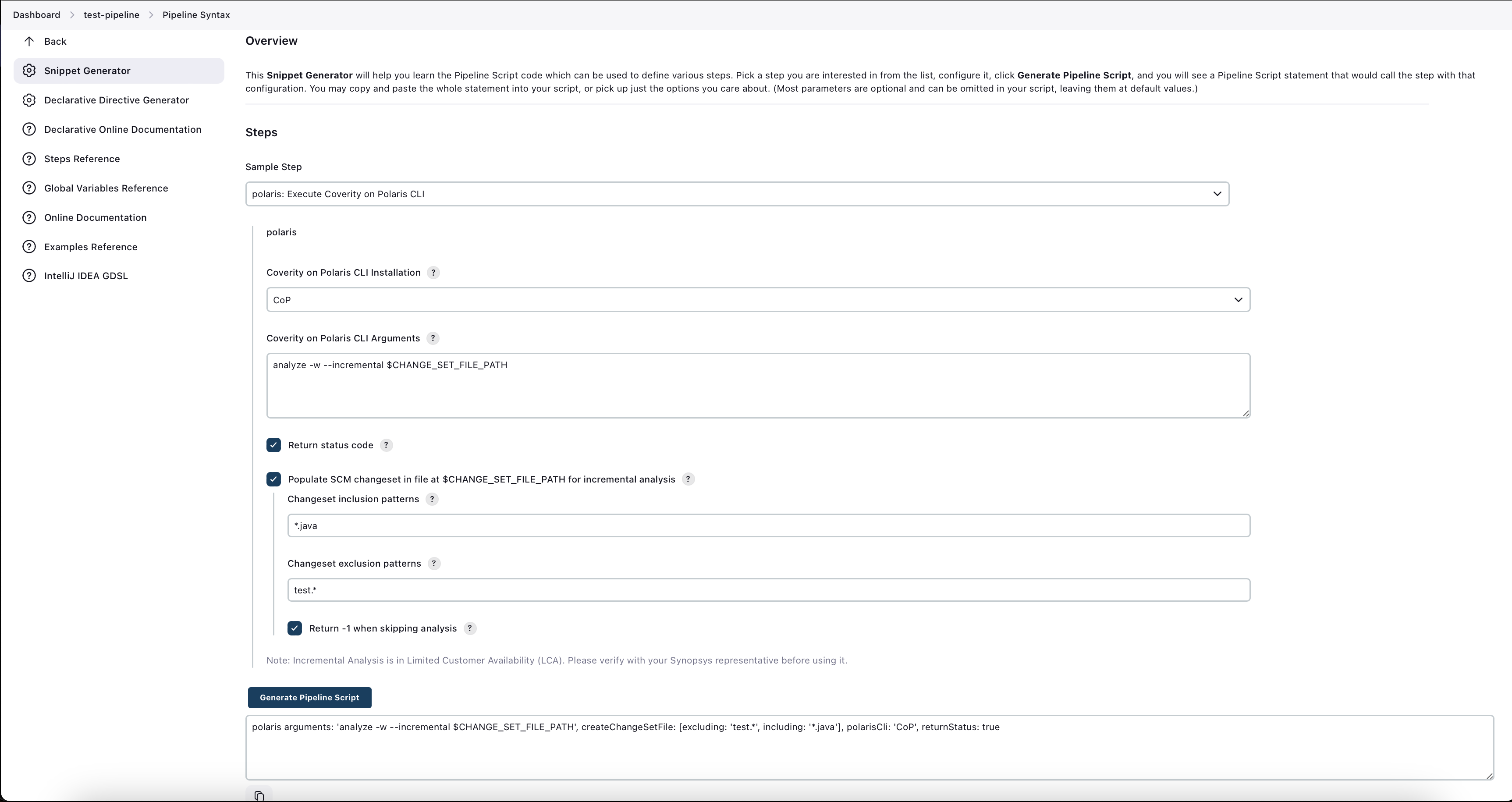Pipeline Syntax Generation
Note: This platform is renamed Coverity on Polaris.References to Polaris or Polaris Software Integrity Platform in this documentation and screenshots are referring to Coverity on Polaris.
Use the Snippet Generator to help you configure pipeline script code which can be used to define various steps.
- Coverity on Polaris CLI installation: The selected CLI installation
- Coverity on Polaris CLI Arguments: Coverity on Polaris arguments
- Return status code: Return a status code, which defaults to true
-
Populate SCM changeset in file at $CHANGE_SET_FILE_PATH for incremental analysis:
Populate the changeset files at the path
$CHANGE_SET_FILE_PATHto be used in the incremental analysis (LCA). - Changeset inclusion patterns: Include filename patterns
- Changeset exclusion patterns: Exclude filename patterns
- Return -1 when skipping analysis: Return a status code of
-1instead of throwing an exception when skipping analysis because the changeset is empty.

polaris arguments:
'analyze -w --incremental $CHANGE_SET_FILE_PATH ', createChangeSetFile: [excluding: 'test.*', including: '*.java', returnSkipCode: true], polarisCli: 'CLI 2', returnStatus: trueReturn status codes
Use status codes to manage workflows. The default setting for
returnStatus and returnSkipCode is
true.
The status code that is returned can be used to determine the next step in your pipeline.
-
For a status code of
0(success) from a full scan or incremental analysis (LCA), you might follow with an issue check. -
For a status code of
-1(skip incremental analysis (LCA) because of an empty changeset), you might follow with a full analysis. -
Any status code that is not
0or -1 represents a fail.
0 or -1 are not returned, then you could
use an exception that is thrown to determine the next step in the
pipeline.